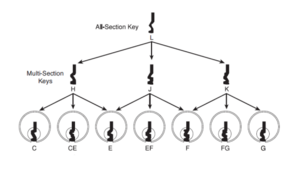Schlage: Difference between revisions
m (link to Everest Primus) |
m (→Lock Listing: update link to Schlage Everest 29 SL Primus XP) |
||
| Line 34: | Line 34: | ||
* [[Schlage Primus|Schlage Primus / Classic Primus / Primus XP]] | * [[Schlage Primus|Schlage Primus / Classic Primus / Primus XP]] | ||
* [[Schlage_Everest_Primus|Schlage Everest Primus]] | * [[Schlage_Everest_Primus|Schlage Everest Primus]] | ||
* [[ | * [[Schlage Everest 29 SL Primus XP]] | ||
* [[Schlage SecureKey]] | * [[Schlage SecureKey]] | ||
Revision as of 01:18, 28 December 2022
Schlage
| Schlage | |
 | |
| Name | Schlage |
|---|---|
| Headquarters | San Fransisco, California (USA) |
| Founded | 1920 |
| Founder(s) | Walter Schlage |
| Products | |
| Padlocks, Lock cylinders, Electronic locks | |
Schlage is an American lock manufacturer that produces padlocks, lock cylinders, electronic locks, and various other lock related equipment. Being widely used in low and medium security residential and commercial installations, Schlage is one of the most well-known lock manufacturers in the United States. Schlage deals primarily with pin-tumbler locks, though older locks have also used wafer designs.
History
Schlage was founded in San Fransisco, California in 1920 by Walter Schlage. Schlage's original locks were focused on push-button combination locks.[1] In 1927, Charles Kendrick became president of Schlage amidst financial troubles. Schlage and Kendrick went on to successfully revive the company.
In 1974 Schlage was purchased by Ingersoll Rand and became part of the Ingersoll Rand Door Hardware Group. The security brands of Ingersoll Rand formed a standalone, publicly-traded company named Allegion Plc (NYSE: ALLE), in December 2013.
Keys

- The standard Schlage keyway is C. The key is 35-100C for the 5-pin, and 35-101C for the 6-pin length.
- Schlage Classic Obverse Keyway Family
The Obverse keyway family includes three double letter keyways: CE, EF, and FG. These are unique keyways, not composites of two keyways. Each of these keyways is operated by its own key section key (plus any hierarchy keys). For example, CE keyway is operable by CE section keys. CE keyway is not operable by C or E section keys.[2]
Lock Listing
- Schlage Classic
- Schlage Everest
- Schlage Primus / Classic Primus / Primus XP
- Schlage Everest Primus
- Schlage Everest 29 SL Primus XP
- Schlage SecureKey